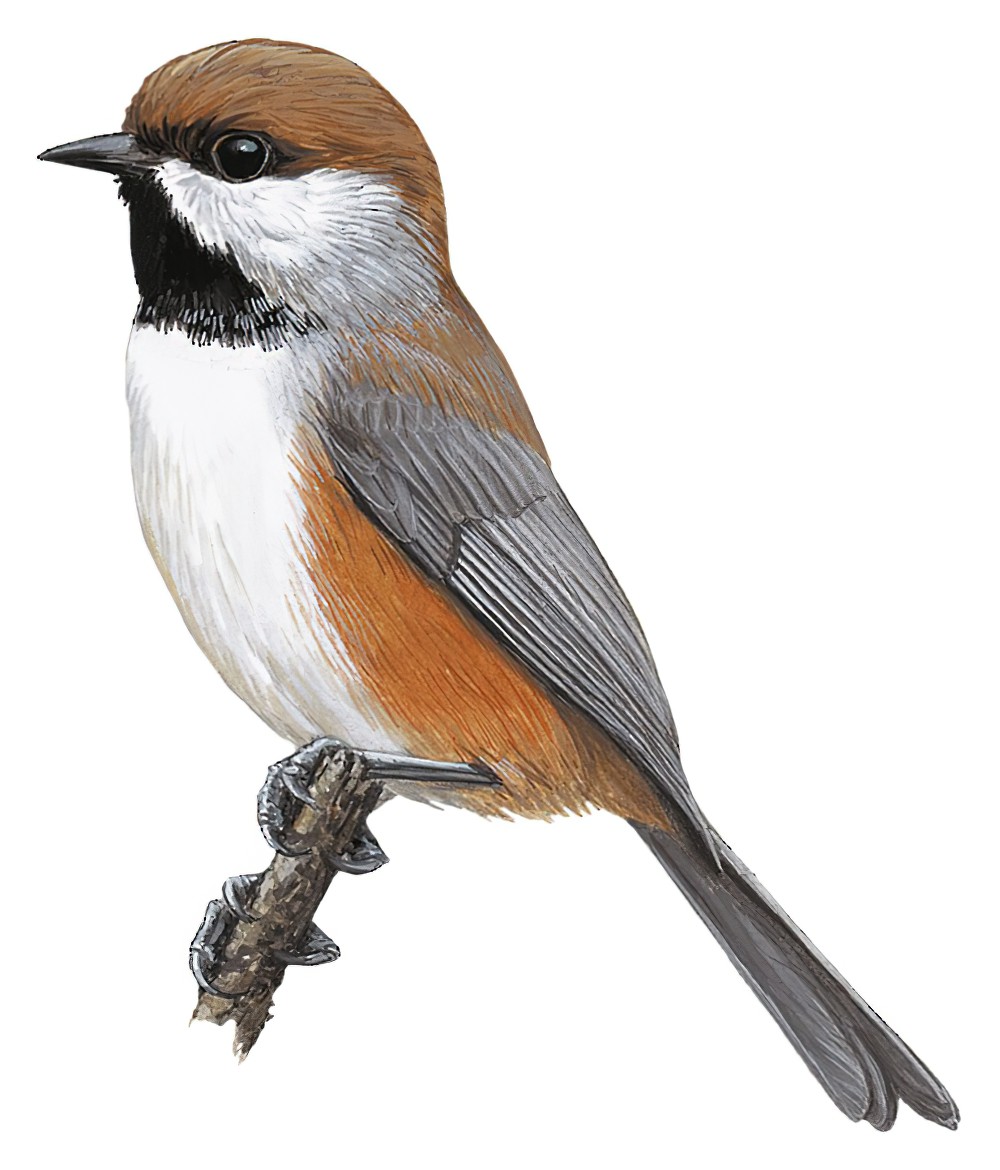Boreal Chickadee / Poecile hudsonicus

Boreal Chickadee
SCI Name:
Protonym: Parus Hudsonicus Philos.Trans. 62 p.408,430
Taxonomy: Passeriformes / Paridae / Poecile
Taxonomy Code: borchi2
Type Locality: Severn River, west coast of Hudson Bay, Canada.
Author: Forster, JR
Publish Year: 1772
IUCN Status: Least Concern
DEFINITIONS
POECILE
(Paridae; Ϯ Marsh Tit P. palustris) Gr. ποικιλος poikilos colourful (cf. ποικιλις poikilis, ποικιλιδος poikilidos unknown small bird, fancifully said to eat lark eggs, perhaps a type of finch); "4. Parus ater, palustris. ... 4. Dohlenmeise. Poecile**). (Parus ater et palustris). E[ntwickelung]. Wie bei Parus und Cyanistes. Ch[arakter]. Kleine Meisen mit glattem schwarzem Kopfe, kurzem Schwanz und aschgraulichem Gefieder. L[ebensart]. Hierin ähneln sie den übrigen Meisen. ... **) ποικιλος, bunt." (Kaup 1829); "POECILE Kaup, 1829 M — Parus palustris Linnaeus, 1758; type by subsequent designation (G. R. Gray, 1842, Appendix to a list of the Genera of Birds, p. 8)." (Dickinson & Christidis (eds.) 2014, 428).
Var. Paecila, Poecila, Poecilia, Poekilis, Peocile.
Synon. Penthestes, Phaeopharus, Poeciloides.
hudsonia / hudsonias / hudsonica / hudsonicus / hudsonis / hudsonius
Hudson Bay or Hudsons Bay, or Hudson Straits, Canada (named after Capt. Henry Hudson (d. 1611) English navigator and explorer, cast adrift there by his mutinous crew).
● ex “Hudsonian Wagtail” of Latham 1802 (syn. Anthus rubescens).
● ex “Ash-colour’d Heron from North America” of Edwards 1750, and “Héron de la Baye de Hudson” of Brisson 1760 (syn. Ardea herodias).
● ex “Turnstone from Hudson’s Bay” of Edwards 1750 (syn. Arenaria interpres).
● ex “Bittern from Hudson’s Bay” of Edwards 1750 (syn. Botaurus lentiginosus).
● ex “Ring-tailed Hawk” of Edwards 1750 (Circus).
● ex “Hudsonian Thrush” (= ☼) of Pennant 1785 (syn. Euphagus carolinus).
● ex “Hudsonian Godwit” of Latham 1787, and Pennant 1787 (syn. Limosa haemastica).
● ex “Eskimaux Curlew” of Pennant 1785, and “Hudsonian Curlew” of Latham 1787 (subsp. Numenius phaeopus).
● ex “Little Hawk Owl” of Edwards 1743, “Strix freti Hudsonis” of Brisson 1760, “Caparacoch” of de Buffon 1770-1783, and “Hawk Owl” of Latham 1781, and Pennant 1785 (syn. Surnia ulula caparoch).
● ex “Hudsonian White-headed Oriole” of Pennant 1785 (unident. partial albino).
SUBSPECIES
Boreal Chickadee (stoneyi)
SCI Name: Poecile hudsonicus stoneyi
stoneyi
Commander George M. Stoney (1853-1905) US Navy, explorer in Alaska 1883-1886 (subsp. Poecile hudsonicus).
Boreal Chickadee (hudsonicus)
SCI Name: Poecile hudsonicus hudsonicus
hudsonia / hudsonias / hudsonica / hudsonicus / hudsonis / hudsonius
Hudson Bay or Hudsons Bay, or Hudson Straits, Canada (named after Capt. Henry Hudson (d. 1611) English navigator and explorer, cast adrift there by his mutinous crew).
● ex “Hudsonian Wagtail” of Latham 1802 (syn. Anthus rubescens).
● ex “Ash-colour’d Heron from North America” of Edwards 1750, and “Héron de la Baye de Hudson” of Brisson 1760 (syn. Ardea herodias).
● ex “Turnstone from Hudson’s Bay” of Edwards 1750 (syn. Arenaria interpres).
● ex “Bittern from Hudson’s Bay” of Edwards 1750 (syn. Botaurus lentiginosus).
● ex “Ring-tailed Hawk” of Edwards 1750 (Circus).
● ex “Hudsonian Thrush” (= ☼) of Pennant 1785 (syn. Euphagus carolinus).
● ex “Hudsonian Godwit” of Latham 1787, and Pennant 1787 (syn. Limosa haemastica).
● ex “Eskimaux Curlew” of Pennant 1785, and “Hudsonian Curlew” of Latham 1787 (subsp. Numenius phaeopus).
● ex “Little Hawk Owl” of Edwards 1743, “Strix freti Hudsonis” of Brisson 1760, “Caparacoch” of de Buffon 1770-1783, and “Hawk Owl” of Latham 1781, and Pennant 1785 (syn. Surnia ulula caparoch).
● ex “Hudsonian White-headed Oriole” of Pennant 1785 (unident. partial albino).
Boreal Chickadee (columbianus)
SCI Name: Poecile hudsonicus columbianus
columbiana / columbianum / columbianus
● Colombia. To this day the name of Colombia is misspelled in newspapers, scientific works (e.g. NAOC Vancouver 2012 Abstracts, p. 207) and books, and on television (e.g. BBC News Channel (Travel!) 14 May 2017), and generally wrongly pronounced there (e.g. Channel 4 Seven O’Clock News, 10 October 2011) and on radio (e.g. BBC Radio 2 Jeremy Vine Show 30 November 2016). “America ... north of the Isthmus of Darien, the southern continent being termed Columbia” (Wood 1835) (subsp. Chamaeza campanisona, subsp. Cinclodes excelsior, Crypturellus, Fulica, Ortalis, Phaethornis, subsp. Philydor rufum, subsp. Synallaxis gujanensis).
● Columbia River or Columbia River region (Oregon) (Cygnus (ex “Whistling Swan” of P. Allen 1814), syn. Gymnogyps californianus, Nucifraga, subsp. Pedioecetes phasianellus (ex “Grouse or Prairie Hen” of Lewis 1814), syn. Piranga ludoviciana).
● Greater Colombia (= Venezuela) (Odontophorus, Philydor).
● Columbia County, Florida, USA (‡ Palaeophoyx).
● British Columbia, Canada (subsp. Poecile hudsonicus).
● Erroneous TL. Porto Cabello, Colombia (= Ciudad Bolívar, Río Orinoco, Venezuela) (Sicalis).
Boreal Chickadee (farleyi)
SCI Name: Poecile hudsonicus farleyi
farleyi
Frank L. Farley (1870-1949) Canadian naturalist (subsp. Poecile hudsonicus).
Boreal Chickadee (littoralis)
SCI Name: Poecile hudsonicus littoralis
littorale / littoralis
L. litoralis littoral, of the shore < litus, litoris shore, beach.
UPPERCASE: current genus
Uppercase first letter: generic synonym
● and ● See: generic homonyms
lowercase: species and subspecies
●: early names, variants, mispellings
‡: extinct
†: type species
Gr.: ancient Greek
L.: Latin
<: derived from
syn: synonym of
/: separates historical and modern geographic names
ex: based on
TL: type locality
OD: original diagnosis (genus) or original description (species)












